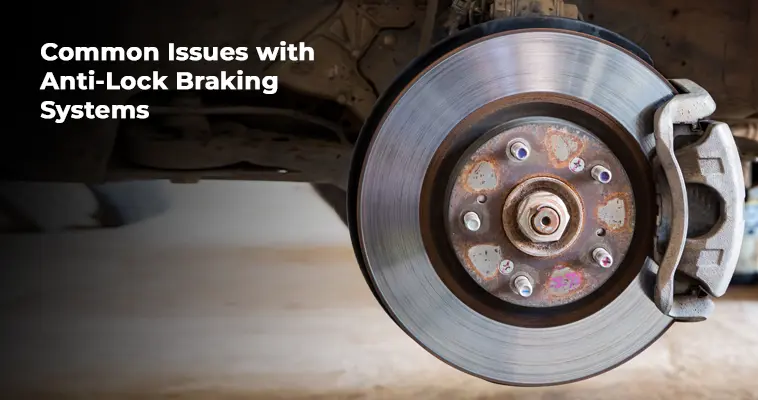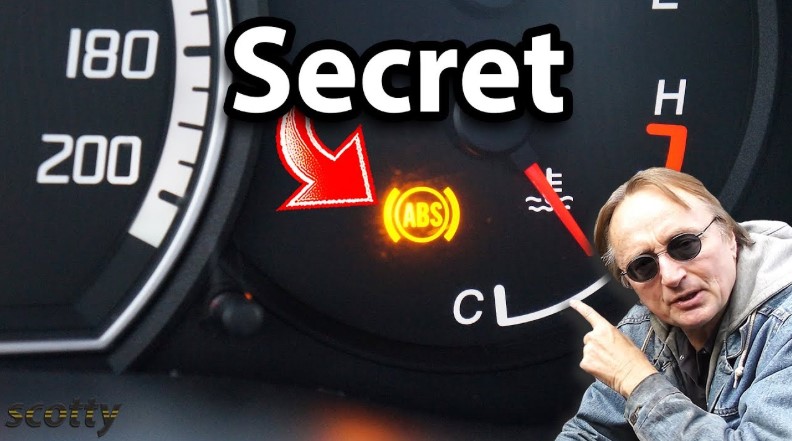Have you ever wondered if your car is equipped with anti-lock brakes? Knowing this can make a big difference when it comes to your safety on the road.
Anti-lock brakes help prevent your wheels from locking up during sudden stops, giving you better control and reducing the chance of skidding. But how can you be sure if your car has this feature? Keep reading, and you’ll discover simple ways to find out if your vehicle is equipped with anti-lock brakes—and why it matters for your driving confidence.

Credit: www.driveincontrol.org
Identify The Abs Light
Identifying the ABS light is the first step to know if your car has anti-lock brakes. This light shows important information about your braking system. It helps you understand if the ABS is working correctly or if there is a problem.
The ABS light appears on your dashboard and looks like a warning symbol. It is easy to spot once you know where to find it. This light comes on briefly when you start your car as a system check.
Locate The Dashboard Indicator
The ABS light is usually near the speedometer or fuel gauge. It has the letters “ABS” inside a circle or a brake symbol. The light is yellow or orange in color. It may turn on for a few seconds when you start the engine.
If the light stays on or blinks while driving, your ABS might not work properly. Check your dashboard every time you start your car to spot this light.
What The Light Means
The ABS light shows the status of your anti-lock brake system. If it stays lit, there is a fault in the system. This means the ABS may not help during hard braking. Your regular brakes still work but without ABS safety features.
Seeing the ABS light means you should get your brakes checked soon. Ignoring it can cause problems with vehicle control on slippery roads. The light helps you stay safe by alerting you to brake issues early.

Credit: bullet-automotive.com
Check The Brake Pedal Feel
Checking the brake pedal feel helps identify if your car has anti-lock brakes (ABS). The brake pedal behaves differently in cars with ABS compared to those without it. By feeling how the pedal responds during braking, you can get clues about the presence of this safety feature.
Normal Vs. Abs Pedal Response
In a car without ABS, the brake pedal feels steady and smooth. Pressing it hard may cause the wheels to lock and skid. The pedal stays firm or may even go to the floor if brakes fade.
With ABS, the brake pedal often feels different during hard braking. You might notice a rapid pulsing or vibration. This happens because ABS quickly pumps the brakes to stop wheel lockup. The pedal can feel bouncy but maintains better control.
Testing The Pedal Safely
Test the brake pedal in a safe, empty area like a parking lot. Press the brake firmly but not too hard. Pay attention to any pulsing or unusual feedback.
Do not slam the brakes suddenly or at high speeds. This can be dangerous and cause loss of control. Instead, brake steadily to notice the pedal’s behavior without risk.
Repeat the test a few times to be sure of the feel. The pulsing or vibration usually only happens during strong braking.
Look For Abs Components
Checking for Anti-lock Braking System (ABS) parts in your car helps confirm if it has ABS. These parts are usually easy to find with a simple inspection. Knowing their location gives you a clear answer about your car’s brake system.
Inspecting Wheel Hubs
Start by examining each wheel hub closely. ABS sensors are often attached near the hub or brake rotor. Look for a small ring with holes or notches around the hub. This is the tone ring, which helps the sensor track wheel speed.
The sensor itself looks like a small wire with a connector plugged in near the brake assembly. It sends signals to the ABS control module about wheel movement. Without these parts, your car likely does not have ABS.
Finding The Abs Module
The ABS module is usually found in the engine bay or under the hood. It looks like a small box with several brake lines connected to it. This box controls the ABS function by managing brake pressure.
Check near the brake master cylinder or fuse box for this module. It often has a label marked “ABS” or “Anti-lock Brake System.” Spotting this module confirms your car has ABS technology installed.

Credit: www.bcsworkshop.com.au
Review The Owner’s Manual
Checking the owner’s manual is the easiest way to find out if your car has anti-lock brakes (ABS). The manual holds important details about your vehicle’s features. It explains how ABS works and shows if your car includes this safety system.
Reading the manual helps you understand your car better. It also guides you on where to look for ABS information and how to interpret the specs. This knowledge can keep you safer on the road.
Where To Find Abs Information
The owner’s manual usually has a section about the braking system. Look in the index under “brakes” or “ABS.” Sometimes, the manual has a list of safety features near the start or in the specifications chapter.
ABS details might also be in the dashboard warning lights section. It explains the ABS light and what it means when it turns on. This part helps you recognize if your system is working properly.
Understanding Vehicle Specifications
Vehicle specifications show if your car has ABS. Check the technical data for the braking system type. It may say “Anti-lock Braking System” or “ABS equipped.”
Specifications also include brake types, like disc or drum brakes. ABS usually pairs with disc brakes on all wheels or at least the front wheels. Knowing these details gives clues about your car’s brake system.
Use A Diagnostic Tool
Using a diagnostic tool helps you check if your car has anti-lock brakes (ABS). This tool reads the car’s computer system for ABS information. It is a fast way to find out without opening the car’s brake system.
Connecting An Obd-ii Scanner
Start by locating the OBD-II port under the dashboard. Plug the scanner into this port. Turn the car key to the “on” position but do not start the engine. The scanner will power up and connect with the car’s computer.
Reading Abs Codes
Once connected, select the option to read ABS codes. The scanner shows any ABS-related trouble codes stored in the system. If codes appear, your car has an ABS system. No codes may mean no ABS or a problem with the system.
Test Braking In Safe Conditions
Testing your car’s braking system in safe conditions helps identify if it has anti-lock brakes. This test requires a quiet, empty space like an empty parking lot or a deserted road. Safety is key. Make sure the surface is dry and free of obstacles. Gradually increase speed and apply the brakes firmly to feel how your car stops.
Performing A Controlled Stop
Drive your car at a slow, steady pace. Press the brake pedal firmly but not suddenly. Keep your hands steady on the wheel. The goal is to stop quickly without losing control. This helps you sense how the brakes respond. Notice if the car skids or stays stable while stopping.
Noticing Abs Activation
Anti-lock brakes prevent the wheels from locking up during hard braking. When ABS activates, you may feel a rapid pulsing in the brake pedal. Listen for a faint buzzing or clicking sound. The car will maintain steering control and avoid skidding. These signs show your car likely has ABS installed.
Frequently Asked Questions
What Are The Signs Your Car Has Anti-lock Brakes?
Look for an ABS light on the dashboard when starting. You may also feel a pulsating brake pedal during hard stops. Check your car manual or specifications for ABS confirmation.
How Can I Identify Abs By Dashboard Indicators?
The ABS warning light usually looks like the letters “ABS” inside a circle. It illuminates briefly when you start the car and stays off if ABS is functional.
Does My Car Brake Pedal Feel Different With Abs?
Yes, during sudden braking, ABS causes a pulsating or vibrating brake pedal. This prevents wheel lock and helps maintain steering control.
Can I Check Abs Through My Car Manual?
Yes, the car manual lists safety features including ABS. It details how ABS works and how to recognize its presence in your vehicle.
Conclusion
Knowing if your car has anti-lock brakes helps keep you safe on the road. Check the dashboard for an ABS light when you start your car. Look under the car or in the owner’s manual for ABS information. Listen for a slight noise when braking hard; it may mean ABS is working.
Understanding this system can make you a better driver. Stay alert and drive carefully every day. Safety starts with knowing your car’s features well.

